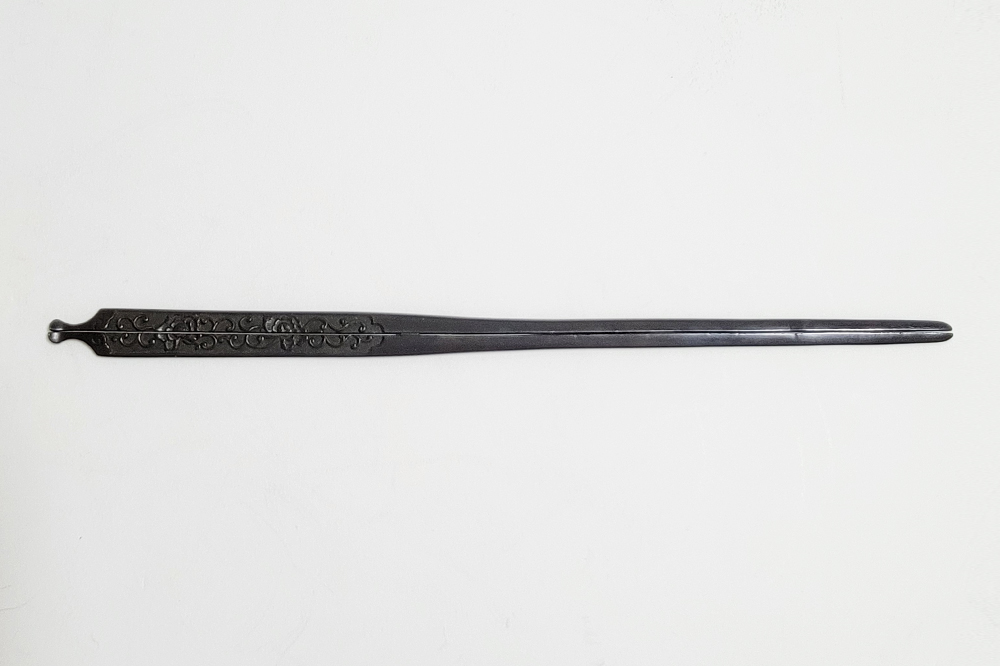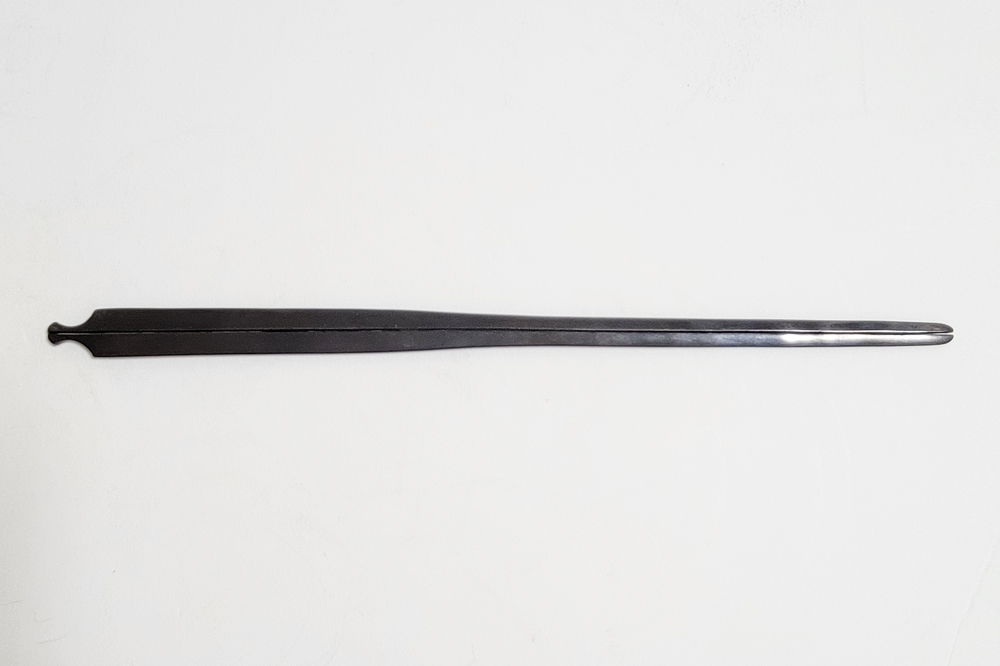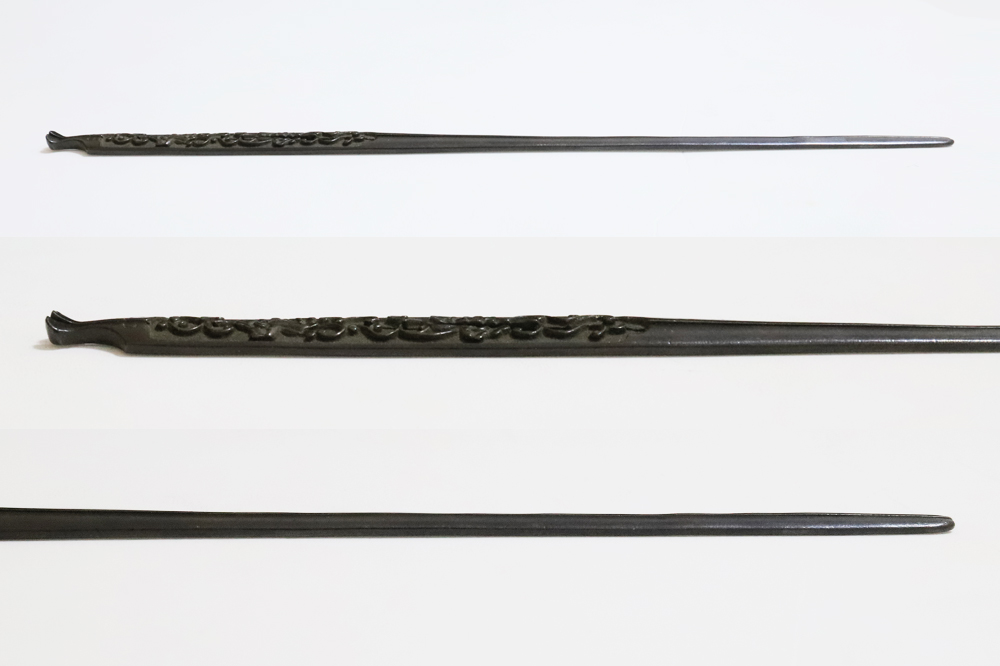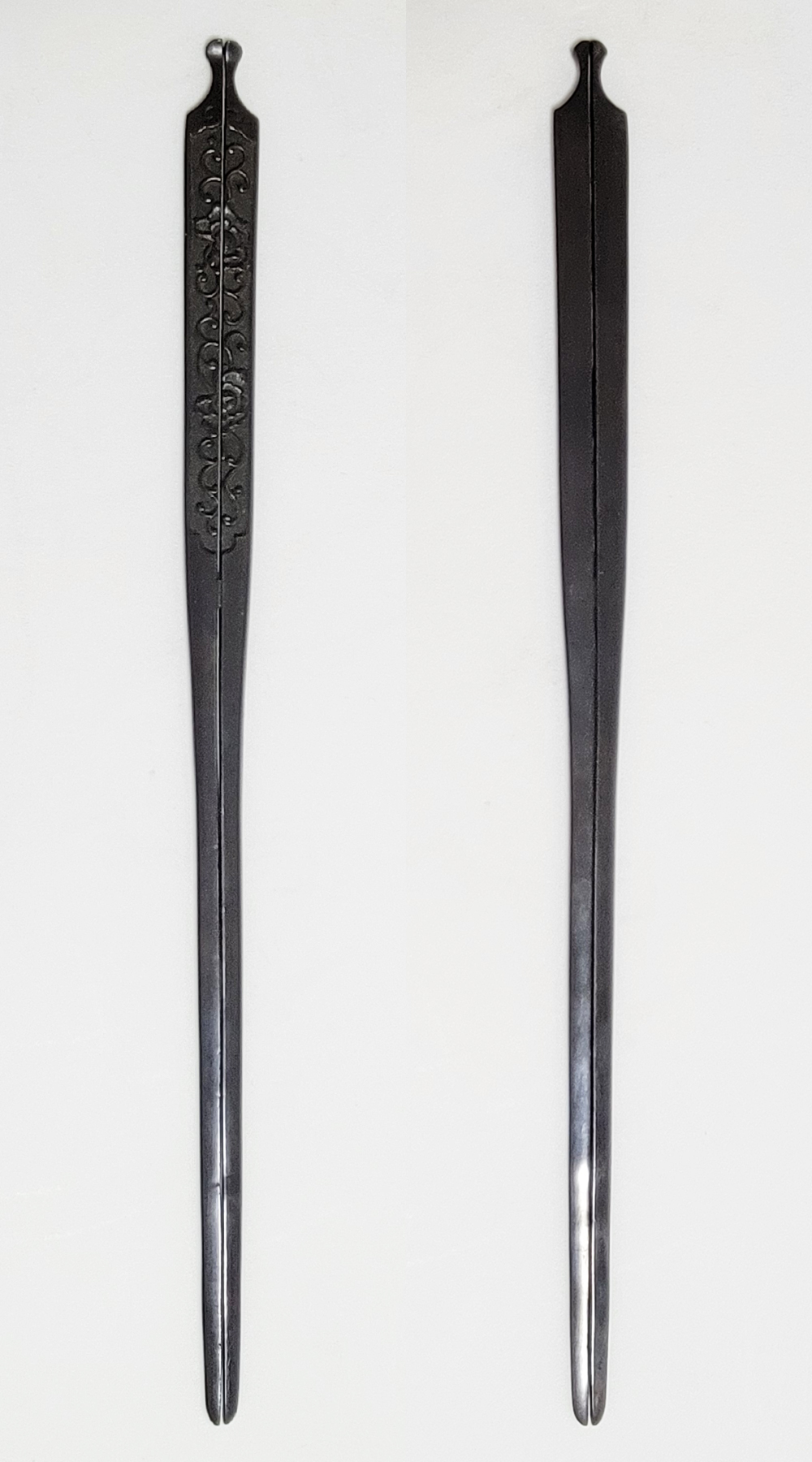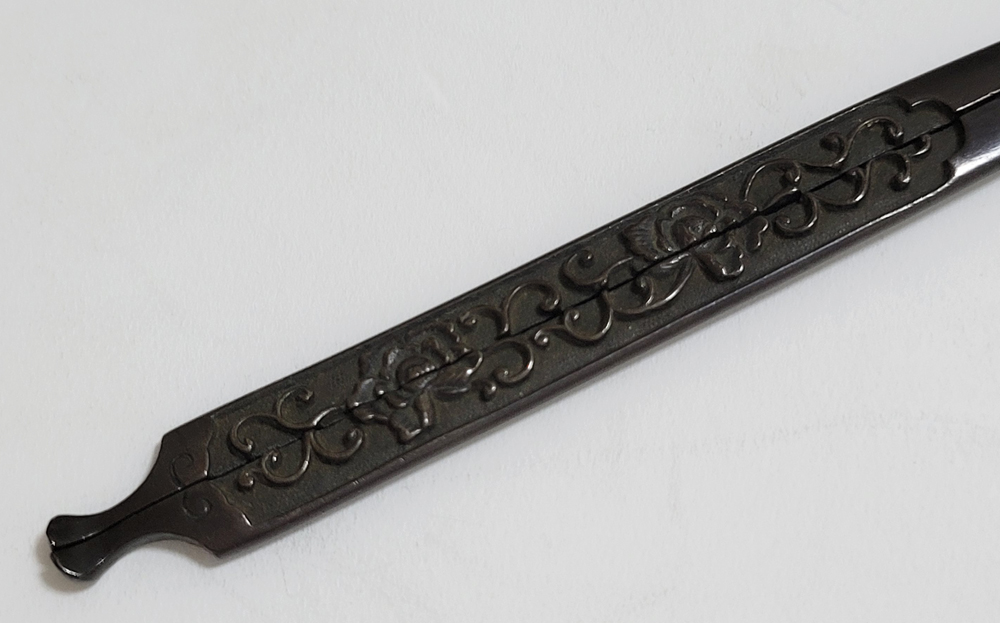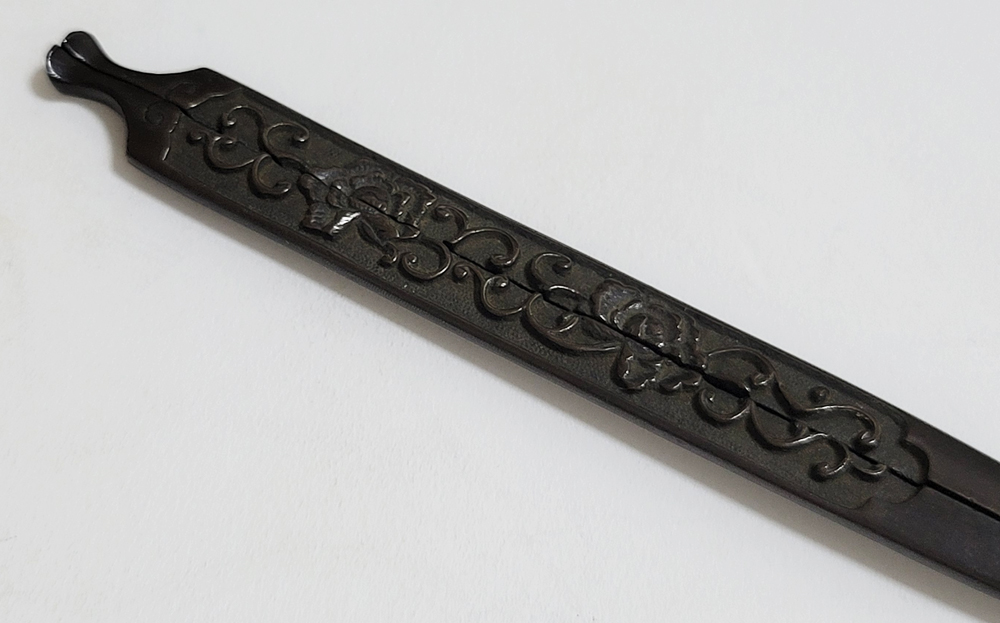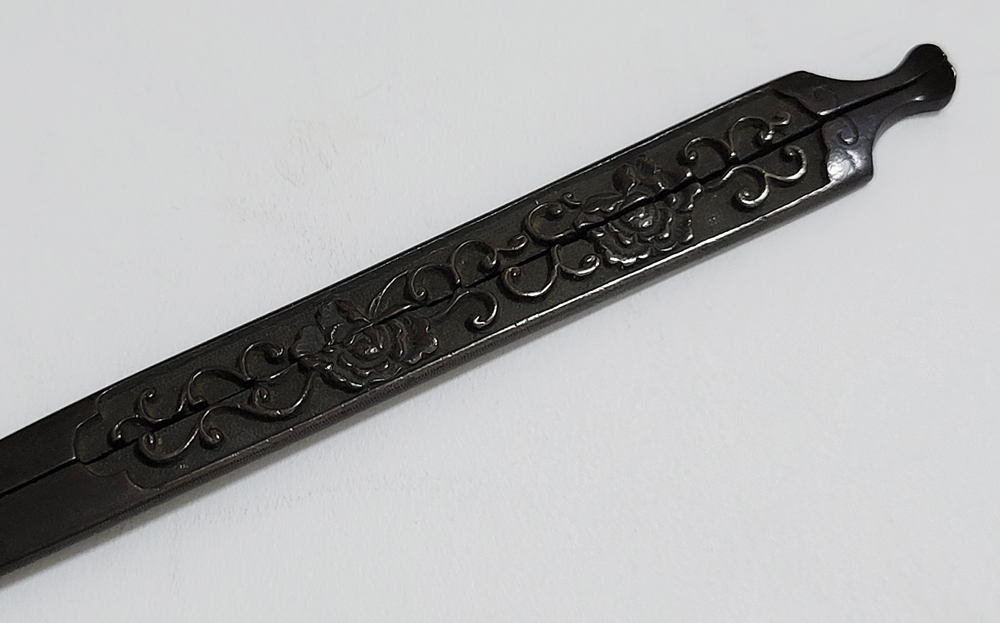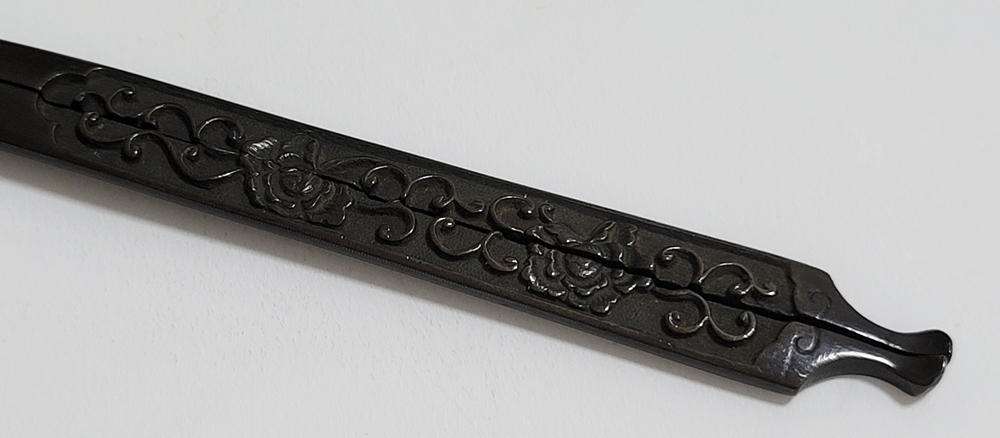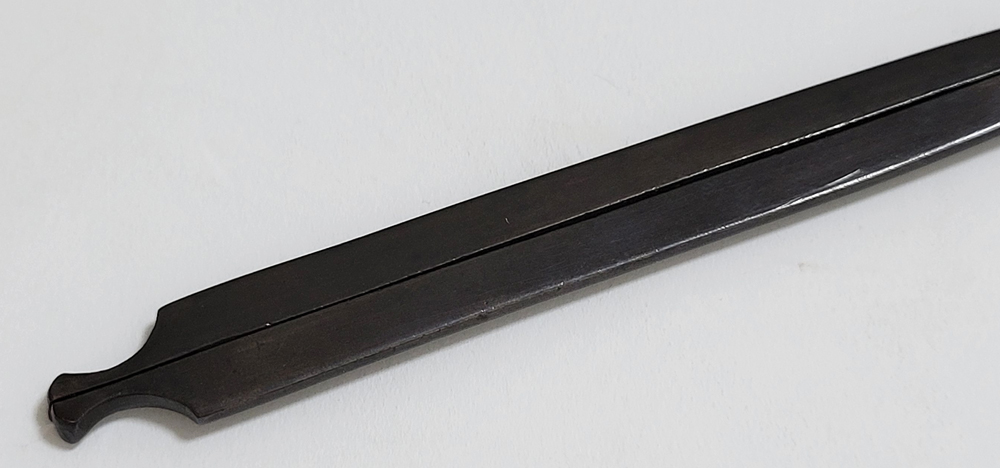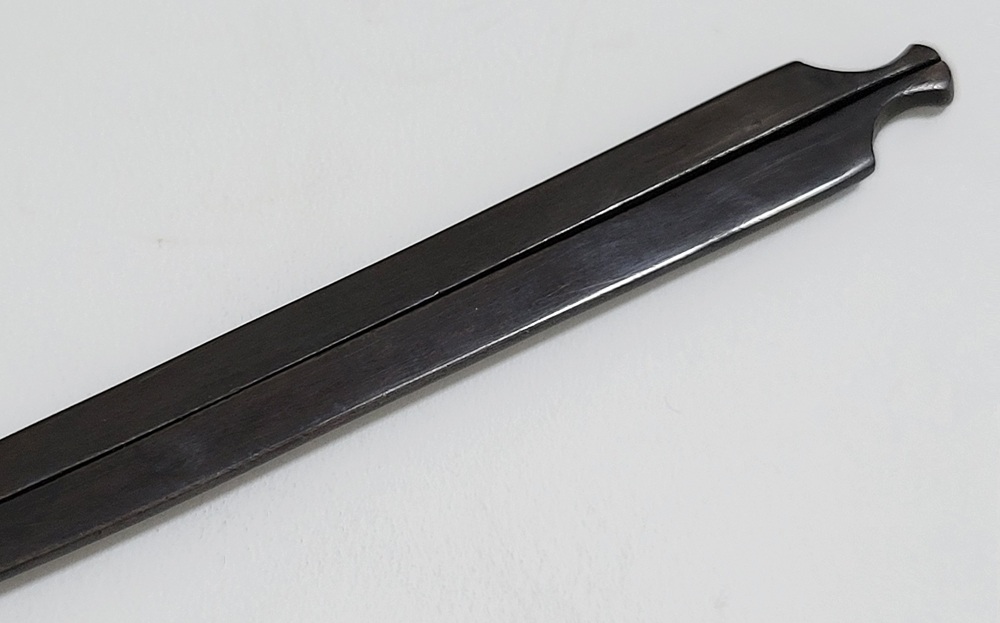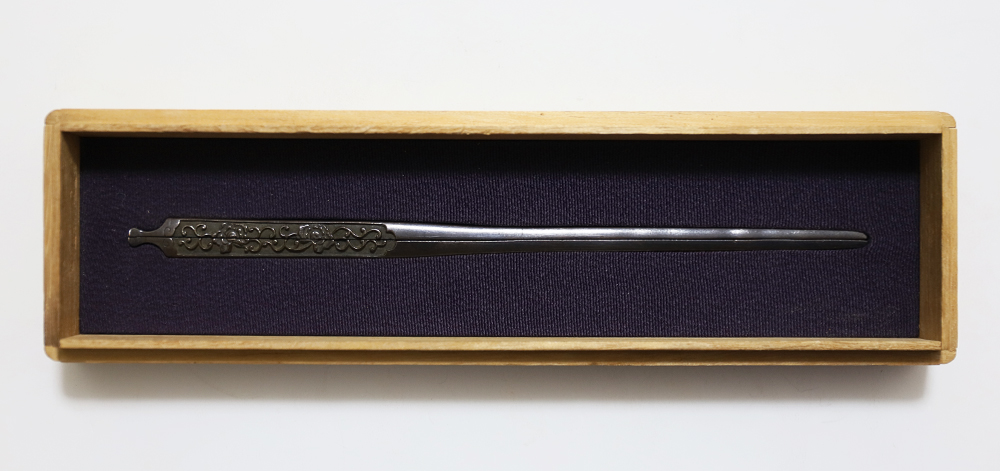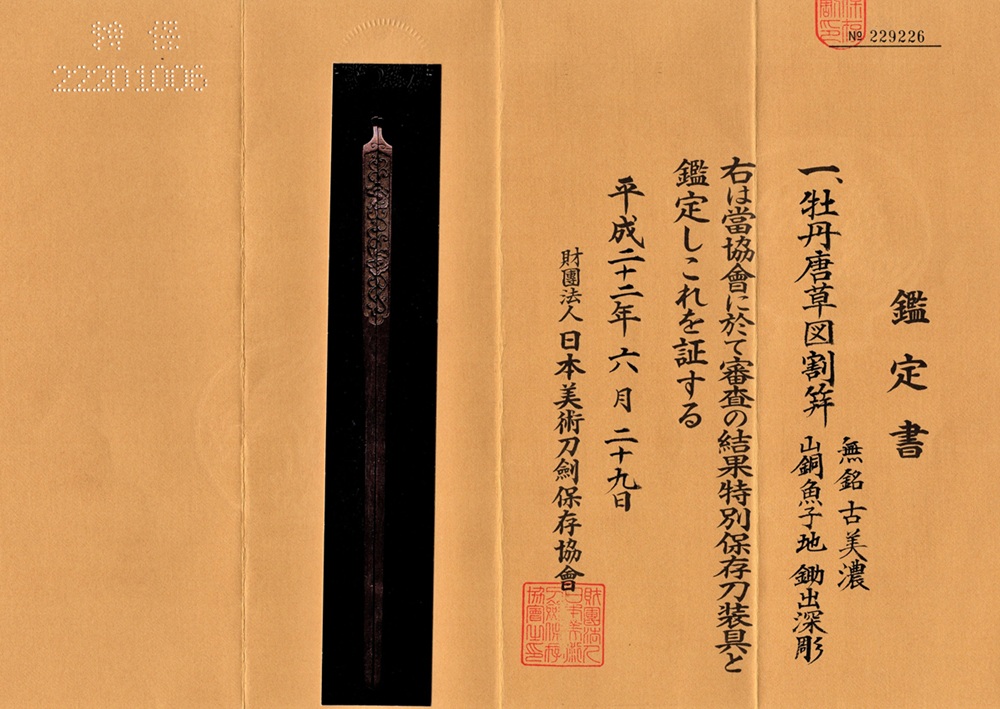| Mino was close to Kyoto and a key transportation hub, so it was geographically favorable and has been a place where engraving techniques have developed since ancient times. This style of carving was done in relief with flowers and animals. Works that are said to have been made before the Momoyama period are called "Ko-mino [古美濃]" and those made after that are called "Mino [美濃]". This wari-kogai is Mino-bori carving, and is an auspicious design that combines the peony, said to be the queen of the flowers, with arabesque that continue to grow and represent the prosperity and longevity of the family. It has been attributed to the ko-mino and passed the Tokubetsu Hozon Tosogu shinsa In 2010. |

